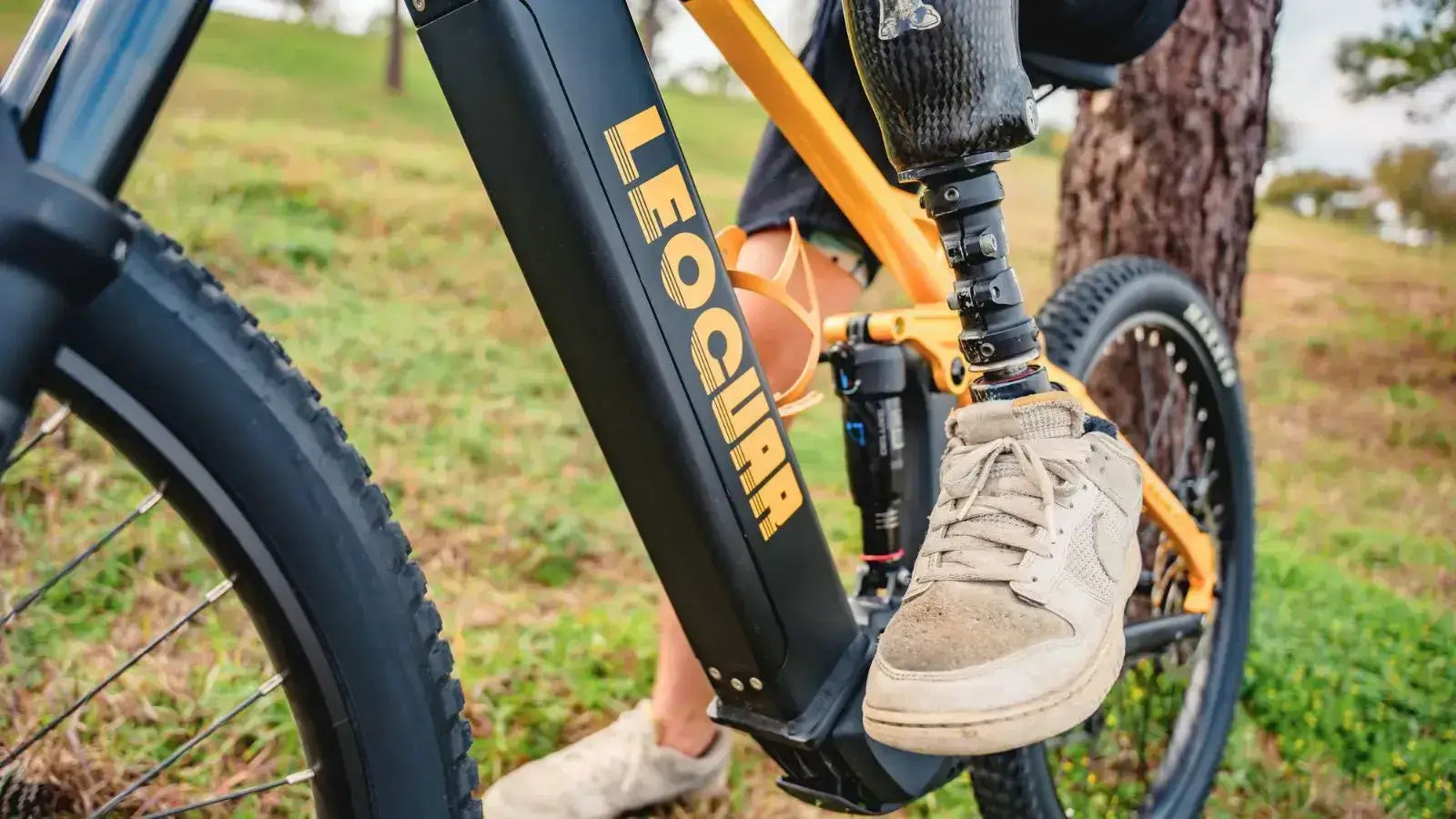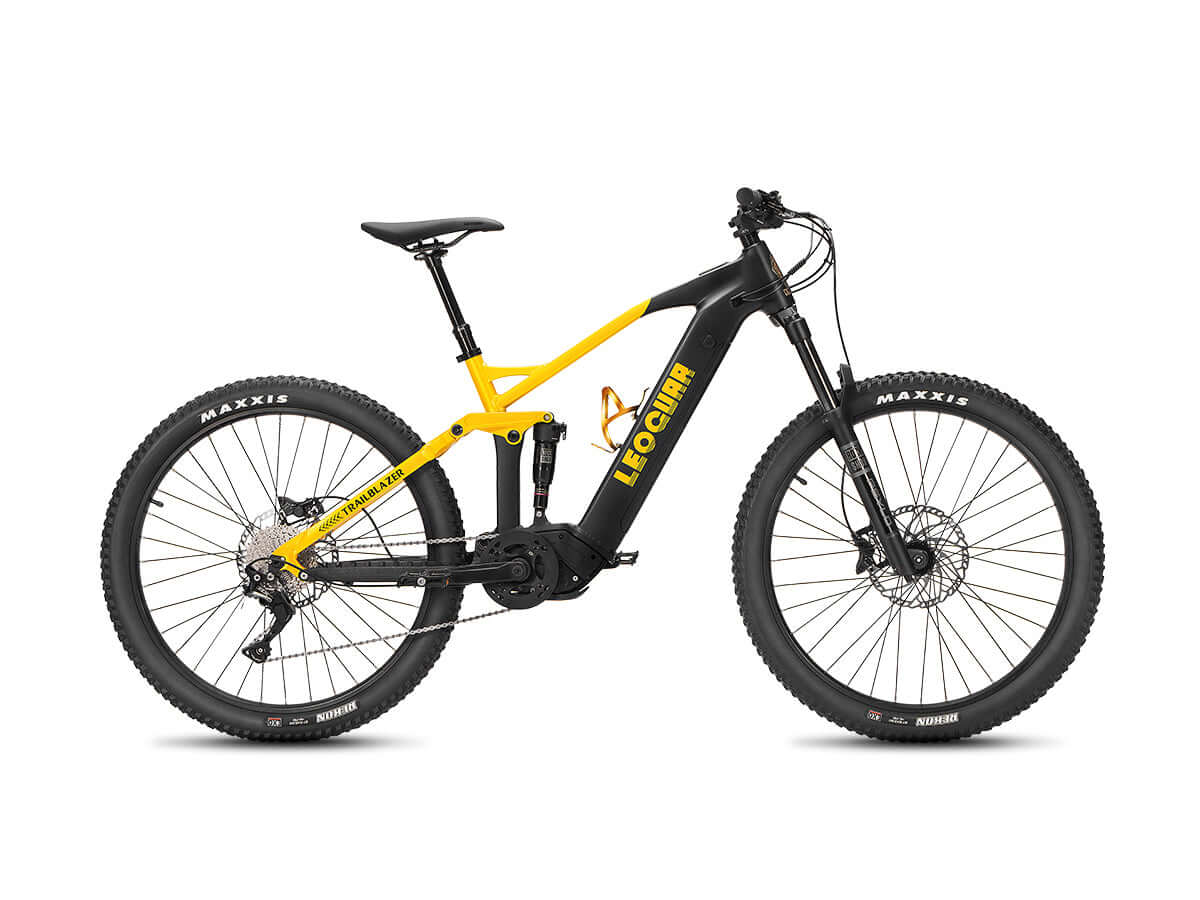
Best Bike Forks for Mountain Biking and Rough Trails
The Unsung Hero
The bike fork connects your front wheel to the frame. It's more than just a basic part that holds things together - it controls how your bike steers, soaks up bumps from the road, and shapes the overall feel of every ride you take. Whether you ride a road bike, mountain bike, or just cruise around town, the fork works quietly up front. It holds the front wheel, lets you steer through the handlebars, and often smooths out rough surfaces. Understanding your bike fork helps you understand how your whole bike works.
Rigid vs. Suspension
Bike forks come in two main types: rigid and suspension. This choice affects everything about how your bike feels and performs. The type you need depends on where and how you ride.
Rigid Forks
A rigid fork is solid with no moving parts. Its simple design makes it strong and reliable. Rigid forks weigh much less than suspension forks, need almost no care, and transfer all your pedaling power directly to the wheel since nothing moves or flexes. Road bikes, track bikes, and many city bikes use rigid forks because they work so well on smooth surfaces. Fat bikes and touring bikes also use them because they're light and almost never break.
Suspension Forks
A suspension fork uses springs and oil to soak up bumps. Mountain bikers started using them in the early 1990s, and now they're standard for off-road riding. When you hit a rock or root, the fork compresses and bounces back, keeping your front tire on the ground and making the ride much more comfortable and controlled. You'll find suspension forks on mountain bikes, some gravel bikes, and comfort bikes.
Anatomy of a Fork
Learning the parts of a fork helps you understand how it works. Each part has a specific job that affects how your bike rides.
- Steerer Tube: This tube goes up into your bike frame and lets you steer. Most steerer tubes are either straight (1-1/8 inch) or tapered (starting at 1-1/8 inch and growing to 1.5 inches at the bottom), with tapered being stronger and stiffer.
- Crown: The crown connects the steerer tube to the fork legs. Most bikes have a single crown, but downhill mountain bikes sometimes use two crowns for extra strength.
- Fork Legs: These two parts extend down from the crown to hold your wheel. On suspension forks, the upper tubes (called stanchions) slide into the lower tubes, and thicker stanchions mean a stiffer, stronger fork.
- Dropouts: These slots at the bottom of the fork legs hold your front wheel's axle. They come in different sizes depending on what type of axle your bike uses.
Decoding Fork Geometry
Your fork affects how your whole bike handles. Changing to a different fork without understanding these measurements can make your bike feel completely different. Three numbers matter most.
- Axle-to-Crown (A2C): This measures from the center of your front axle to the top of the crown. A longer fork raises your front end and makes steering slower, while a shorter fork makes steering quicker and more nervous. Always try to match the length your bike was designed for.
- Rake (or Offset): This is the distance between the steering axis and the center of your front axle. Along with your head tube angle, this determines something called "trail" - more trail makes steering stable at high speeds, while less trail makes steering quick and responsive.
- Travel: For suspension forks, this is how far the fork can compress. Different riding styles need different amounts of travel.
| Riding Discipline | Typical Fork Travel |
|---|---|
| Cross-Country (XC) | 100mm - 120mm |
| Trail | 130mm - 150mm |
| Enduro / All-Mountain | 160mm - 180mm |
| Downhill (DH) | 180mm - 200mm+ |
Suspension Fork Internals
Inside a suspension fork, a spring and damper work together to control how your wheel moves. The spring holds up your weight and compresses when you hit something, while the damper controls how fast everything happens.
The Spring System
The spring supports your weight and soaks up impacts. Two main types exist, each with different benefits.
- Coil Springs: These use a steel spring like a car. Coil springs feel very smooth and consistent throughout their travel, and they're great at absorbing small bumps. However, they weigh more than air springs, and you have to physically change the spring to adjust for different rider weights.
- Air Springs: These use pressurized air instead of steel. Air springs weigh much less than coil springs and adjust easily with a special pump - you can change the spring rate in just a few minutes. Modern air springs work almost as well as coil springs in most situations.
The Damper System
Without a damper, your fork would bounce like a pogo stick. The damper uses oil flow to control how fast your fork compresses and rebounds.
- Compression Damping: This controls how fast your fork compresses when you hit something. Expensive forks let you adjust Low-Speed Compression (for braking and cornering forces) and High-Speed Compression (for hitting rocks and roots) separately.
- Rebound Damping: This controls how fast your fork extends after compressing. Too fast makes the fork feel bouncy and harsh, while too slow makes it pack down and not recover in time for the next bump.
- Lockout: Many forks have a lever or dial that makes them rigid for climbing smooth hills. This prevents energy loss when you don't need suspension.
Fork Materials Compared
The material your fork is made from affects its weight, stiffness, comfort, and price. Each material has strengths and weaknesses.
- Steel: The traditional choice, steel (usually chromoly) is strong, durable, and naturally absorbs vibrations for a smooth ride. Its main problem is weight - steel forks are heavier than other materials.
- Aluminum: A popular middle-ground choice that's light, stiff, and affordable to make. Aluminum provides precise handling but doesn't absorb vibrations as well as other materials, so it can feel harsh on rough roads.
- Carbon Fiber: The premium choice for high-end road forks and some mountain bike forks. Carbon can be incredibly light, very stiff in the right directions, and excellent at absorbing road buzz for a comfortable yet efficient ride. The downsides are high cost and the risk of damage from sharp impacts.
- Titanium: A premium material that combines aluminum's light weight with steel's comfort and excellent corrosion resistance. Titanium forks offer an amazing ride quality but cost much more than other materials.
Choosing Your Fork
Picking the right fork means balancing performance, compatibility, and your budget. Getting the wrong fork can ruin your bike's handling or simply not fit at all.
Match Your Discipline
Start by thinking about how you ride most often. A long-travel enduro fork is too much for cross-country trails, and a lightweight road fork won't survive mountain bike trails. Use the travel chart above for mountain bikes, and think about material benefits for rigid forks.
Check Compatibility
This step is critical because an incompatible fork is useless. Before buying, confirm these measurements match your bike:
- Head Tube Standard: Does your frame need a straight or tapered steerer tube?
- Wheel Size: Is the fork made for 26-inch, 27.5-inch, or 29-inch wheels?
- Axle Standard: Do you need Quick Release or Thru-Axle (like 15x100mm or 15x110mm Boost)?
- Brake Mount: Make sure the fork's brake mount matches your brake caliper.
- A2C and Travel: Try to stay within 10mm of your original fork's travel to keep your bike's geometry correct.
Upgrading vs. Replacing
Consider upgrading if you want better performance like more adjustments, less weight, or increased stiffness. Replace your fork immediately if you see bent parts, deep scratches on the stanchions, or any cracks in the crown or steerer tube.

Essential Fork Maintenance
A suspension fork needs regular care to work properly and safely. Skipping maintenance leads to poor performance and expensive repairs.
Before Every Ride
Do a quick safety check each time you ride. Wipe the stanchions clean and push down on the fork to make sure it moves smoothly. Look for any oil on the stanchions, which means the seals might be leaking.
Basic Service (Lower Leg)
The most important job is servicing the lower legs every 50 hours of riding. This involves taking apart the bottom of the fork, cleaning everything, replacing the foam rings that keep the stanchions lubricated, and putting in new seals. This keeps your fork feeling smooth and prevents dirt from getting inside and causing damage. You can do this at home with the right tools, or many bike shops offer this service.
Full Damper/Spring Service
A complete service involves taking apart and rebuilding the damper and air spring. This complex job should happen every 100-200 hours of riding and usually requires special tools and knowledge that most bike shops have.
Signs You Need Service
Your fork will tell you when it needs attention. Watch for these warning signs:
- A sticky or harsh feeling that doesn't improve after cleaning
- Oil leaking from the seals
- Strange noises like squelching or clunking
- The fork not using its full travel even with correct air pressure
The Final Word
The bike fork is much more than a simple part - it's the heart of your bike's handling and comfort. Choosing the right fork ensures your bike works as designed, while regular maintenance keeps that performance lasting for years. From the efficient simplicity of a carbon road fork to the trail-taming power of modern mountain ebike front forks, this component makes the difference between a good ride and a great one.
FAQ
1. Q: How often should I service my suspension fork?
A: You should do a basic lower leg service every 50 hours of riding, and a full damper service every 100-200 hours. If you ride once a week, that's roughly once a year for basic service and every 2-3 years for full service.
2. Q: Can I put a suspension fork on my rigid bike?
A: Maybe, but you need to check compatibility carefully. The new fork must have the same axle-to-crown measurement, steerer tube type, and wheel size as your original fork, or it will change your bike's handling significantly.
3. Q: What's the difference between coil and air suspension forks?
A: Coil forks use a steel spring and feel very smooth but weigh more and are harder to adjust. Air forks use pressurized air, weigh less, and adjust easily with a pump, but may not feel quite as smooth on small bumps.
4. Q: How do I know what travel length I need?
A: Travel depends on your riding style. Cross-country riders need 100-120mm, trail riders need 130-150mm, and aggressive mountain bikers need 160mm or more. More travel handles bigger hits but makes the bike less efficient for pedaling.
5. Q: Why is my suspension fork making noise?
A: Noises usually mean your fork needs service. Squelching sounds indicate old oil or air in the damper, while clunking might mean worn bushings or loose parts. Clean your fork first, and if noises continue, take it to a bike shop for inspection.









































Leave a comment